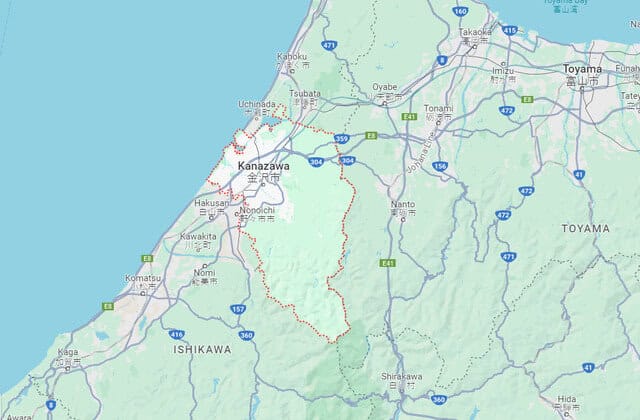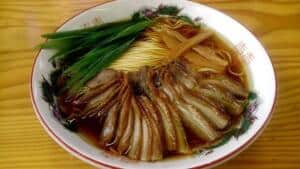In the heart of Japan, Kanazawa is a city celebrated for its distinctive ramen, showcasing a culinary experience beyond the ordinary. This article will guide you through the essence of Kanazawa ramen, exploring the history, ingredients, and the special touch local chefs bring to this beloved dish. Join us on this culinary journey as we encourage you to immerse yourself in the world of Kanazawa ramen, appreciating the nuances that make it a truly unforgettable dining experience.
What is Kanazawa ramen?

Kanazawa ramen is a signature miso ramen dish in Kanazawa, Ishikawa prefecture—made using additive-free, fully-matured, traditional Kaga miso that locals have loved for 300 years. Coupled that with thickly cut chashu, a nicely executed soft-boiled egg, and top-notch topping. One of the characteristics of Kanazawa City’s ramen is that many of them are healthy. Kanazawa’s ramen shop offers a wide variety of ramen, including pork bone, seafood, chicken bone, and even rare shellfish.
Kanazawa ramen History

The history of Kanazawa ramen traces its roots back to Mitsukuni Mito, a renowned figure in historical dramas, who is credited with introducing Chinese noodles to Japan during the Edo period. Mitsukuni, known for his deep appreciation of noodles, invited Confucian scholar Zhu Shunsui from the Ming Dynasty to the Mito domain, where lotus root starch noodles were first introduced. During this era, ramen differed significantly from the modern version, featuring lotus root starch noodles and unique toppings like ginger, garlic, chives, green onions, and rakkyo.
The widespread popularity of ramen in Japan took a significant leap during the Meiji era, following the Meiji Restoration in 1872. The opening of a Chinese town in Yokohama’s newly established port allowed for the introduction of various ramen styles. In times of scarce supplies, ramen’s affordability and nutritional value made it an ideal food choice. The subsequent diversification of ramen flavors, including soy sauce, salt, miso, and pork bone varieties, contributed to its nationwide popularity.
The evolution of ramen continued with the emergence of local ramen, which incorporated regional ingredients and specialties. In Kanazawa, the birthplace of Kanazawa ramen, shops like Yoshimune began offering luxurious variations featuring rich chicken, seafood, and dried sardine broths adorned with unique gold leaf accents. The menu, including limited edition ramen and lighter options, reflects the ongoing innovation and diversity within the ramen culture.
Kanazawa City

Kanazawa is the capital of Ishikawa Prefecture, on Japan’s central Honshu Island. This city is famous for its delicious food, thanks to its rich variety of ingredients. The city’s location, surrounded by mountains and the sea, ensures a constant supply of fresh ingredients throughout the year. The Sea of Japan provides delicacies like snow crab, sweet shrimp, black-throated seaweed, and yellowtail. The Kanazawa plains are a vital source of Koshihikari rice. At the same time, Kaga vegetables, including Kaga lotus root and Kintokiso, are traditional and still widely grown. Local specialities such as “jibuni,” “steamed sea bream,” and “kaburazushi” add unique flavours. The area has a long history of tea ceremonies, leading to various Japanese sweets, making it one of the top three Japanese sweets destinations. High-quality local sake and seasonings complement the dishes perfectly. Recently, local gourmet foods like Kanazawa curry and Kanazawa oden have gained popularity.
About the Fish of Kanazawa Area

Spring Fish: Sayori
In Ishikawa, indulge in sashimi featuring Sayori, a type of halfbeak. While savoring the delicate Sayori Mozoko Soup, a local Noto dish, relish a clear broth complemented by sayori shirayaki, mozuku, and tofu. The traditional half-break fishing method involves dragging nets between two boats, a practice known as “suzuhiki.”
Summer Fish: Squid
Witness squid fishing boats dot the horizon in Ishikawa, where 30% of the fishery production comprises the Japanese common squid. Squid, including representative varieties like spear, big, and red squid, is celebrated for its unique flavors. Try the Fried Surume Squid with Soy Sauce, known as Surumeika.
Autumn Fish: Northern Shrimp
Indulge in delectable sashimi with Hokkoku Aka Shrimp, known as Northern Shrimp. These shrimp, found in the cold depths of the North Atlantic and Pacific Oceans, change sex during their growth process. Delight in sweet shrimp sashimi, a seasonal autumn delicacy.
Winter Fish: Yellowtail and Snow Crab
Explore the rich fishing history of Ishikawa, especially Noto Noburi nets, which have been in use for yellowtail fishing since the 16th century. Relish Makiburi and Hoshiinada are notable processed products. As winter arrives, anticipate the opening day of snow crab season on November 6th, with males known as snow crabs and females as koubako crabs. Enjoy the delicacy of immature snow crab eggs (uchiko) with vinegar and soy sauce, a representative winter delight in Ishikawa.
Kanazawa ramen FAQ
- What does Kanazawa ramen taste like?
-
Like many regional ramen varieties in Japan, Kanazawa ramen has a unique flavor profile. While individual preferences can vary, some general characteristics of Kanazawa ramen feature a rich and flavorful broth. You can make the broth from various ingredients, such as chicken, seafood, or dried sardines, contributing to its depth of taste.
- What are some of the standard toppings of Kanazawa Ramen?
-
Common ramen toppings such as sliced pork (chashu), green onions, bamboo shoots, and dried seaweed may be present. The specific combination and presentation of toppings can also add to the overall experience.
Where to buy Kanazawa ramen?
Natural Ramen Kagura (自然派ラーメン 神楽)

Natural Ramen Kagura is the only ramen restaurant in Kanazawa included in the Tabelog 100 restaurants and featured on the Michelin Guide. This restaurant features homemade noodles and a soup made from 15 types of soup stock, including seafood and chicken.
Menya Taiga (麺屋大河)

Menya Taiga” is ranked second in Kanazawa city, according to Tabelog. It is no exaggeration to say that when it comes to miso ramen in Kanazawa, you think of Menya Taiga. It is located in Horikawa-cho, about a 4-minute walk from the east exit of Kanazawa Station. In addition to ramen, toppings, rice dishes, and alcoholic beverages are also available.
Kanazawa Rich Chinese Soba Shinsen (金澤濃厚中華そば 神仙)

As the name suggests, this restaurant is known for its rich and delicious Chinese noodles. The thin, low-hydration noodles go down smoothly with the rich soup. A popular menu item is the “Special Chinese Soba.” The soup is pork bone soy sauce based and has a punchy taste.
Final Thoughts

It is important to note that there can be variations in Kanazawa ramen depending on the ramen shop and the chef’s preferences. If you can try Kanazawa ramen, consider exploring different shops to experience the range of flavors and styles this regional specialty offers.
You can check some Japanese dishes like Kanazawa oden, Tokyo ramen, and Shoyu ramen that we know you would like to try too.
















Comments